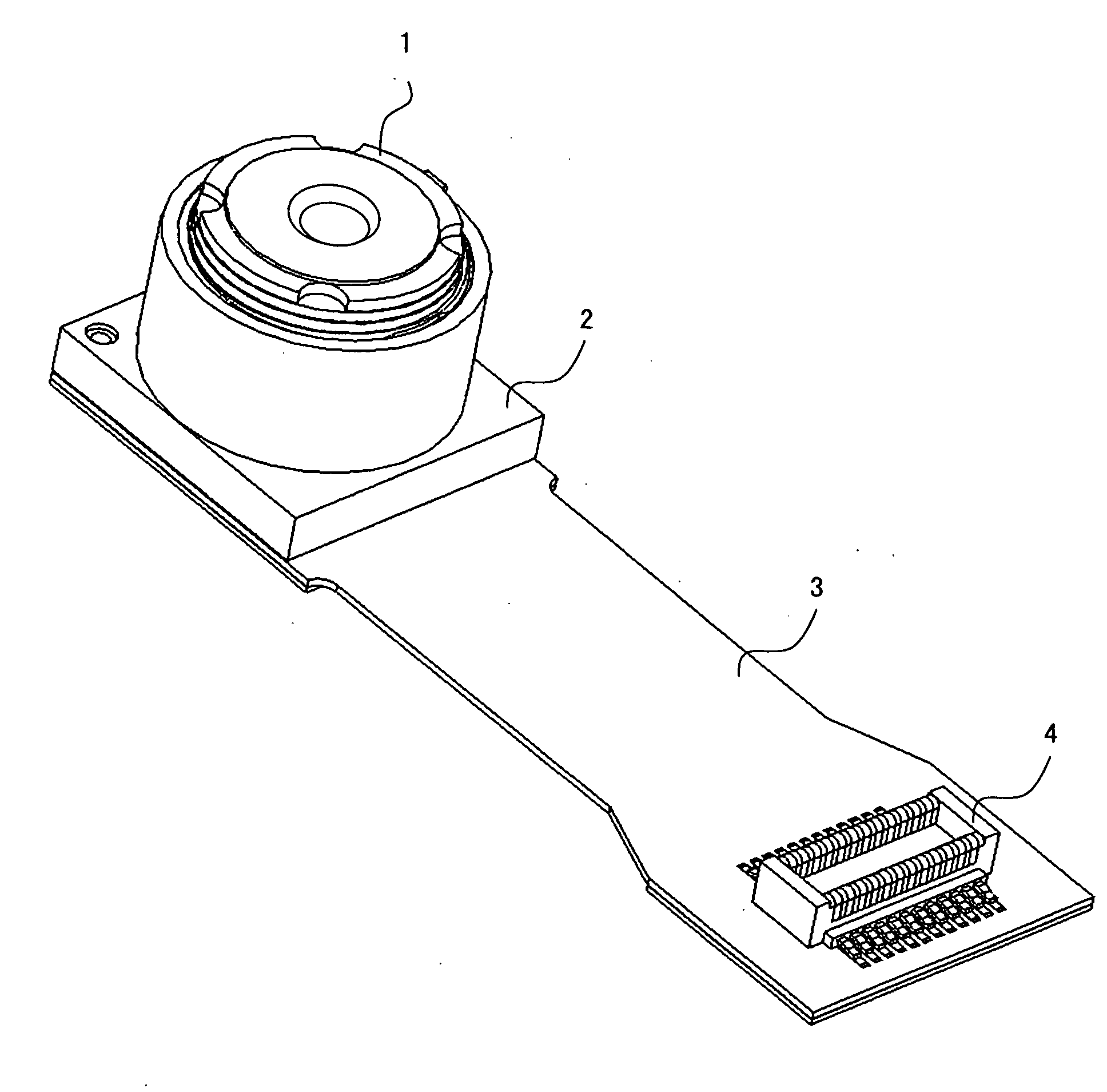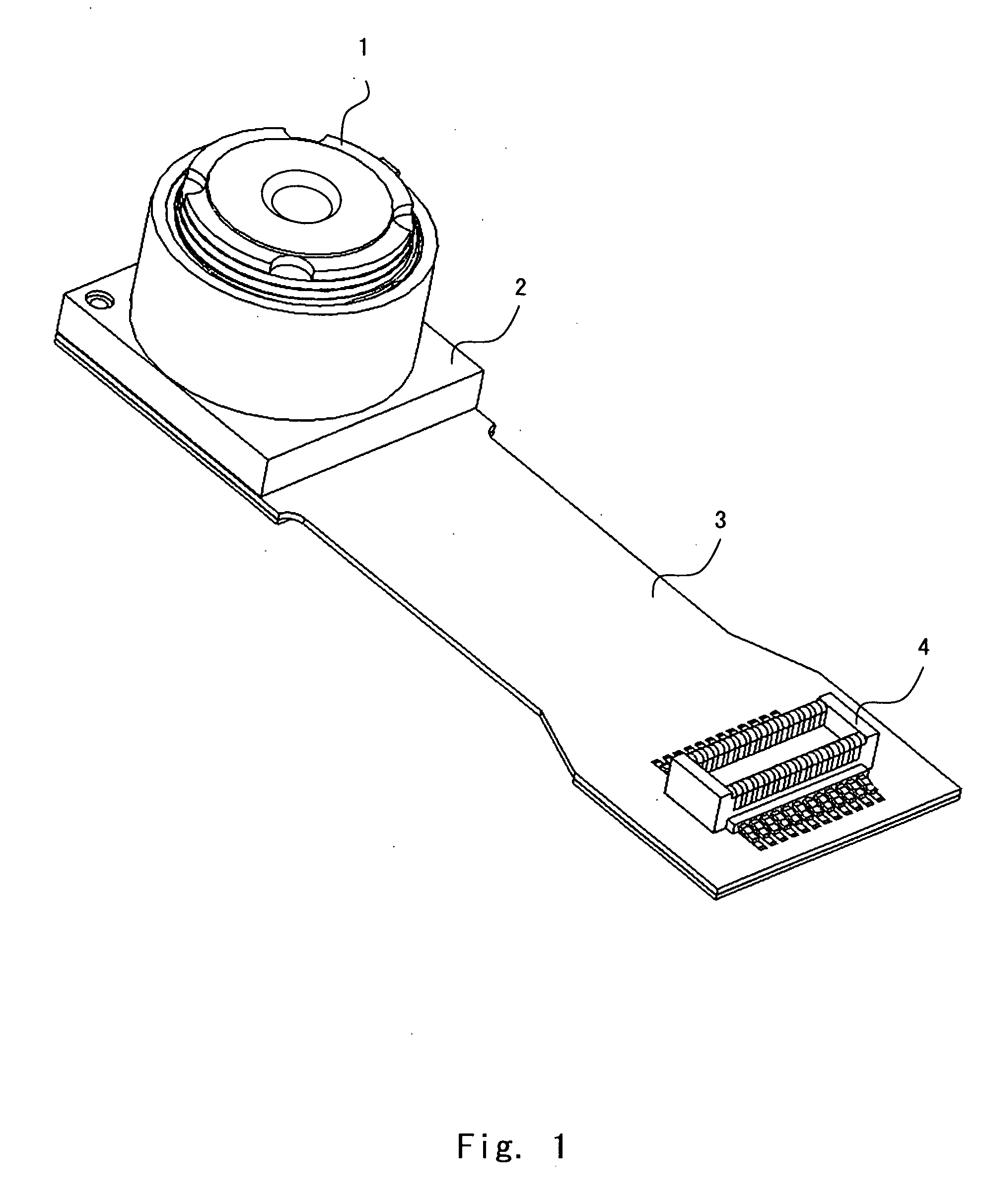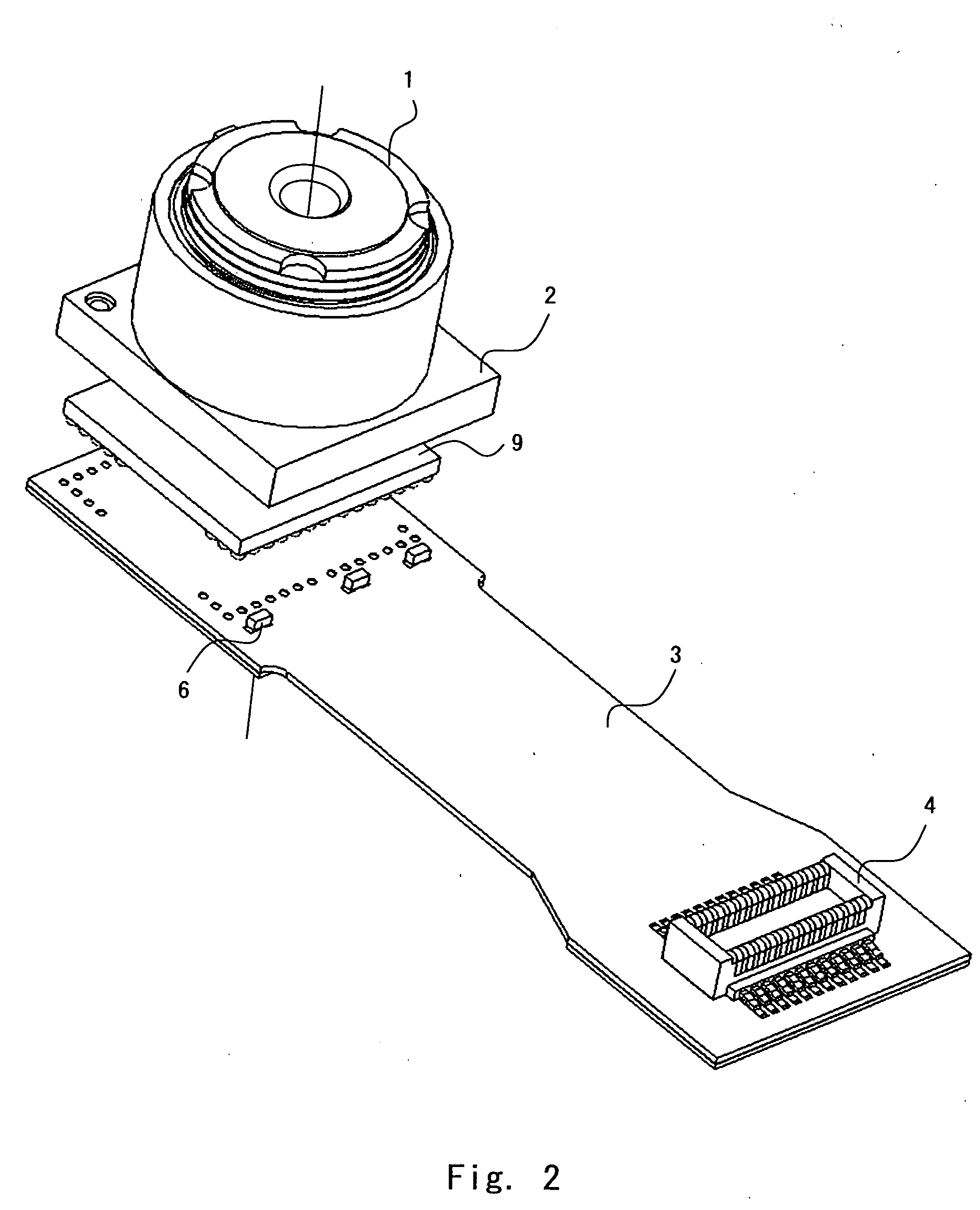Camera module
- Summary
- Abstract
- Description
- Claims
- Application Information
AI Technical Summary
Benefits of technology
Problems solved by technology
Method used
Image
Examples
first embodiment
[0063]FIG. 1 is a perspective view showing the camera module according to the present invention. FIG. 2 is an exploded perspective view showing the camera module. Further, FIG. 3 is a cross-sectional diagram showing the camera module. As shown in FIGS. 1 to 3, the camera module of the present invention includes a lens module 1, a mount 2, a FPC (Flexible Printed Circuit) substrate 3, a connecter 4, a solid-state imaging device 5, a capacitor 6, a lens 7, an optical filter 8, a cover glass (cover plate) 9, a reinforcement sheet 10, and solder balls 11.
[0064]The lens module 1 is in a cylinder shape with one or more lenses accurately fixed to an inner peripheral surface thereof. Other than the lens 7, an optical aperture and an O ring may be provided in the lens module 1. A screw structure is provided on an outer peripheral surface of the lens module 1 so that it is screwed with the mount 2. The lens module 1 is formed of a synthetic resin with a light blocking effect such as a black p...
example 1
[0111]For a camera module of the first embodiment, the thickness of the lens holder 32 is created under the following condition. The configuration of the camera module is same as the one shown in FIG. 9.
S / (H×H)=0.1
example 2
[0112]For a camera module of the second embodiment, the thickness of the lens holder 32 is created under the following condition. The configuration of the camera module is same as the one shown in FIG. 9.
S / (H×H)=0.2
PUM
 Login to View More
Login to View More Abstract
Description
Claims
Application Information
 Login to View More
Login to View More - R&D
- Intellectual Property
- Life Sciences
- Materials
- Tech Scout
- Unparalleled Data Quality
- Higher Quality Content
- 60% Fewer Hallucinations
Browse by: Latest US Patents, China's latest patents, Technical Efficacy Thesaurus, Application Domain, Technology Topic, Popular Technical Reports.
© 2025 PatSnap. All rights reserved.Legal|Privacy policy|Modern Slavery Act Transparency Statement|Sitemap|About US| Contact US: help@patsnap.com



